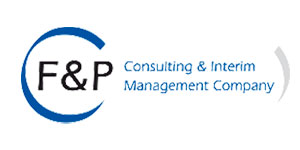I am reading the “2018 Corporate Longevity Forecast”, February 2018 edition by Innosight. The subtitle is “Creative Destruction is Accelerating – S&P 500 lifespans continue to shrink, requiring new strategies for navigating disruption”.
Let’s have a look at the figures first: In 1964 a traditional S&P 500 company stayed in the index for 33 years. In 2016 they lasted 24 years in the index and this number is forecasted to shrink to 12 years by 2027.
A forecast, nonetheless.
What stroke me in the Executive Summary was something else: 80% of the asked executives answered that they have to transform either their core offerings or their business model.
This sounds a little like wishful thinking in my ears and contrasts my experience. Sorry to name this in the full cruelty: The speed of thinking in most corporations is slower than the changing market dynamics. A couple paragraphs later – and here I quote:
But frequently, companies miss opportunities to adapt or take advantage of these changes. For example, they continue to apply existing business models to new markets, are slow to respond to disruptive competitors in low-profit segments, or fail to adequately envision and invest in new growth areas which often takes a decade or longer to pay off.
And is reality even worse? I use to ask executives in board rooms one question that guarantees a blank stare: If we go to the exit of your facility and ask every associate what she / he has done today to reach a strategic company goal, what would they answer?
This answer, the above mentioned numbers (and my experiences) are a call to action. Do not wait for the competition to take away your customers. The customer expectations are changing as well. Improve your speed of thinking and ACTING to stay ahead of the business. If cash is still king, then the queen on the throne is speed.
Worldwide Manufacturing Predictions 2018
Let’s look at another document which comes from IDC with the title “IDC FutureScape: Worldwide Manufacturing Predictions 2018”. Out of this publication Industry Week wrote in their Dec. 19, 2017 about the ten top findings. Not surprisingly, IT and digital transformation are in the top – always. The changes in the industry are obvious and again I quote:
- Redefining how businesses design (or define), deliver and monetize products and services
- Developing new contextualized and customized experiences for customers, employees and partners
Translation into plain business English: Speed and in-depth knowledge of your customers’ needs to provide one-piece flow. And all digital with working together in an integrated supply chain by using a lot of data.
If the findings are correct, which I don’t doubt, we’ll see a tremendous change in the industry ahead and the above mentioned forecast from Innosight with the longevity of companies might be a little to optimistic.
To stay at the top means to realize the changing rules of the games. And then you have to take action. But before taking action, I strongly advise to optimize your processes. I have witnessed a trend in the last years in the industry that software tries to run the real processes at the shop-floor level. Issue is, that most IT folks cannot recognize a broken process from a lean one that delivers value to the customer. And I do have my problems with that. Simple example we all have witnessed: Back in the days when people replaced their pen-and-paper day-planners with the Outlook calendar, they did not get more productive. They got more busy. Often (and still) doing the wrong things. Or doing fire-fighting.
The other way round is also possible. Associates do not understand the software and their (mathematical) principles and try to fix the system. Most of the time for worse and waste or WIP is a guaranteed outcome.
With software coming in and replacing common sense as in the Outlook case or with most ERP systems, the problems grew. What even struck me is that IT-departments are usually understaffed and the whole organization waits for whatever solution production, engineering, sales or … asked for in how-many-IT-tickets.
So, we are digitizing
- broken processes
- in a world where the customers’ needs are defined by the competition who listens best and
- try to master the digital transformation
- with understaffed IT-departments
- in order to compete with the fastest competitors and
- have no idea on how to make these processes with zero defects.
Would you bet your money on this scenario? Why not fixing the processes first and then digitize only the value creating processes and leaving all the waste out? That is much less work and you have the time again to listen to your customers and suppliers which is a prerequisite to delivering value.
If the rules of the game change, what is your next move?




